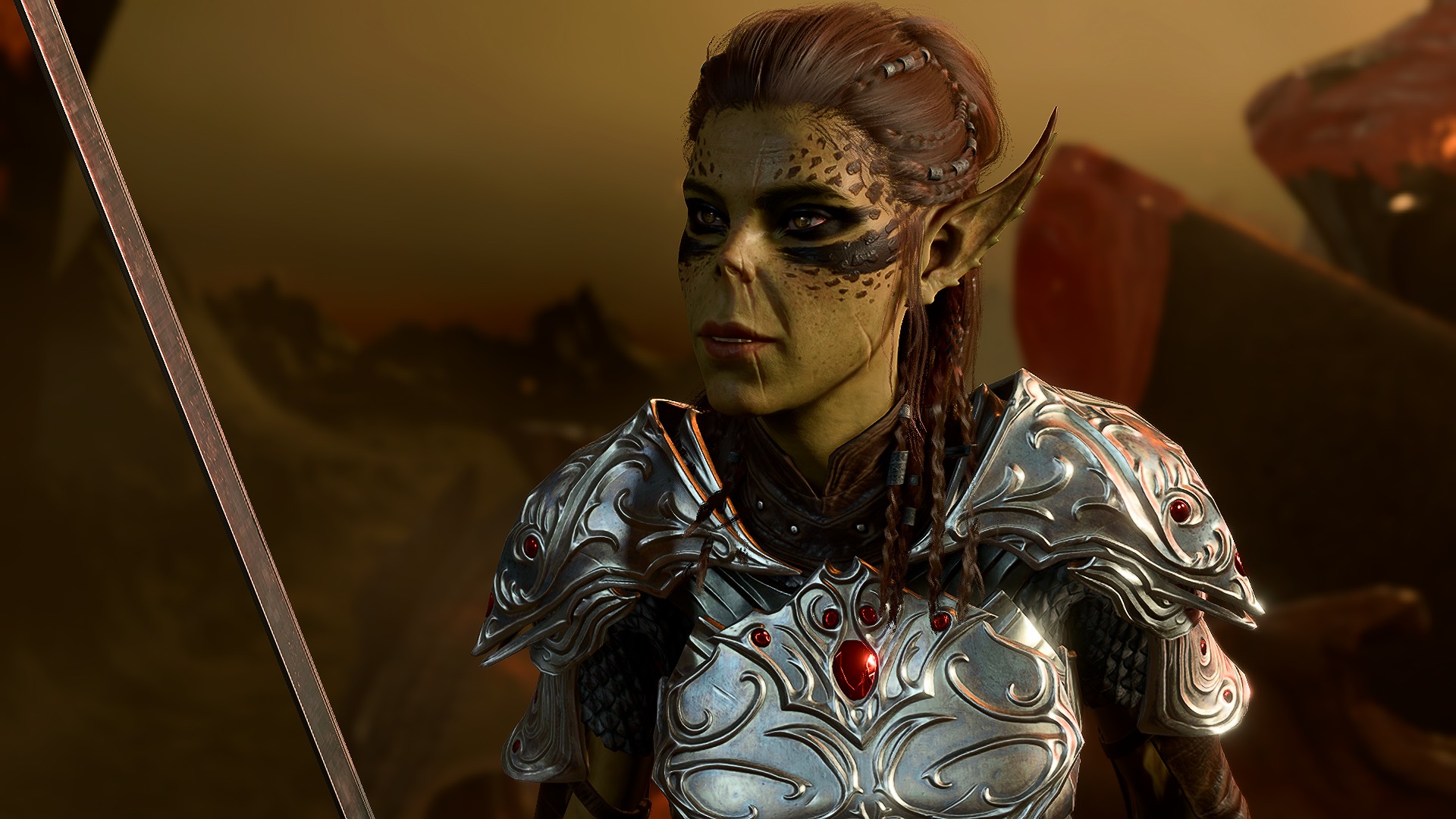To create its cast of Baldur's Gate 3 companions, Larian came up with 'hundreds and hundreds' of character concepts: 'It was a huge, huge list'
Character classes were the last details finalized in the Baldur's Gate 3 party's long iteration process.

It's hard to imagine now, but when Baldur's Gate 3's six beloved companion characters were first imagined, they were just a handful of one-line pitches among "hundreds and hundreds" of other possible character concepts. Their origins were revealed last week during BAFTA's "An Evening with Baldur's Gate 3," which included an interview with Larian CEO and co-founder Swen Vincke, writing director Adam Smith, and lead writer Chrystal Ding.
"It was a huge, huge list," Smith said, immediately adding a new top entry to my list of spreadsheets I desperately wish I could see. What else could've been on there, between the tragic vampire and gaslit githyanki? Half-orc bards, maybe? Dwarven union agitators? Elminster's surly stepson?
Whoever the other party members might've been, when Larian went through the long process of winnowing the ranks, the main consideration was how well their stories would play with each other. "We'd go through them and we'd say, are they compatible? Do they overlap too much? Are we going to be repeating ourselves in the stories here?" Smith said. "And do they fit the themes? That was the most important thing."
As Smith described it to host Jane Douglas, across years of development and early access testing, the companion characters that made it into the game have remained unchanged from their original, core concepts. "What was the heart of them stayed true," Smith said, "but everything else was open to change."
Crucial to how those core concepts were eventually realized as final characters were their actors, whose performances helped to define how those characters evolved. "There were six years on this thing, right?" Smith said. "For the actors, it was like returning for a season of a TV show—you're coming back knowing what your character has been through."
Races and classes shifted during development: Astarion, Vincke said, was originally imagined as a tiefling, while the default class for the Dark Urge origin story shuffled through almost every available option. In fact, Vincke said class was the last thing to finalize for most of the BG3 cast. "It was really later in the process that we said, 'Okay, we need to lock in certain classes that we want to be compatible with the player,'" Vincke said, but noted that cleric had always been intended for Shadowheart. "We figured everybody was going to need a healer."
The characters' stories and classes, Vincke explained, were the product of an ongoing dialogue between the narrative team, the concept and 3D artists, the cinematics department, the game and level designers, and more besides. Nothing in game development happens in a vacuum, and a change in level geometry or game systems might force a revision for where, when, and how a character's arc might play out.
The biggest gaming news, reviews and hardware deals
Keep up to date with the most important stories and the best deals, as picked by the PC Gamer team.
"Often you could see the stories of companions change in function—'oh, we can tell this story here, but we can't tell that story there,'" Vincke said. "It's a constant process of things affecting one another, and eventually reaching some form of stability."
BAFTA's night of Baldur's Gate 3 panels also featured a group conversation with its cast of voice acting talent, as well as a talk with composer Borislav Slavov. To watch them yourself, keep an eye on the BAFTA YouTube channel, where we're told they'll be available soon.
Lincoln has been writing about games for 11 years—unless you include the essays about procedural storytelling in Dwarf Fortress he convinced his college professors to accept. Leveraging the brainworms from a youth spent in World of Warcraft to write for sites like Waypoint, Polygon, and Fanbyte, Lincoln spent three years freelancing for PC Gamer before joining on as a full-time News Writer in 2024, bringing an expertise in Caves of Qud bird diplomacy, getting sons killed in Crusader Kings, and hitting dinosaurs with hammers in Monster Hunter.
- Harvey RandallStaff Writer

